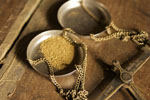
This post originally appeared on Global Post.
The recent report that Afghanistan has mineral deposits worth $1 trillion has led several writers to make a broad comparison to the Democratic Republic of the Congo (DRC).
Conflict in that country, which is blamed for killing more than 5 million people, is fueled in significant part by the illicit trade in minerals worth hundreds of millions of dollars per year. It’s worth delving into the less obvious links between mineral resources and instability in eastern Congo to illustrate the potentially grave effects of a gold, lithium, or niobium rush in Afghanistan.
1) The pell-mell rush to exploit minerals and other natural resources in the midst of a war further complicates already thorny conflicts. At the outset, the war in eastern Congo was not about minerals, but was the result of an explosive combination of fallout from the genocide in neighboring Rwanda, the collapse of the regime of Mobutu in Congo (then known as Zaire) and simmering tensions over land and citizenship in eastern Congo.
But the profits from the mineral trade enriched whatever rebel group controlled the mining area and gave incentive to for the systematic looting of the country by interlopers on all sides of the war from 1998 through 2002, and then by an alphabet soup of rebel groups, militias and military units operating in the restive eastern provinces up until the present. The money gained from the mining changed the logic of the war.
Immediate thought should be given as to how a potential mineral windfall will impact Afghanistan’s similarly intricate layers of local, national and regional conflicts.
2) Earnings from minerals put weapons in the hands of warlords by strengthening their global networks of financial supporters. Control of minerals has made rebels in Congo less dependent on external political support, and given them a connection to international markets. Electronics companies, jewelers and other end-users of Congo’s minerals are effectively laundering the proceeds from war. Moreover, in the pursuit of profits, competing networks of armed groups and business elites routinely manipulate Congo’s inflammatory grievances around ethnicity and other sensitive subjects. It’s a toxic combination that helps to explain why the conflict in eastern Congo remains so deadly, after more than a decade of U.N. peacekeepers. As the war in Afghanistan drags on, the mineral trade could well further entrench that conflict, too.
Click here to continue reading.

